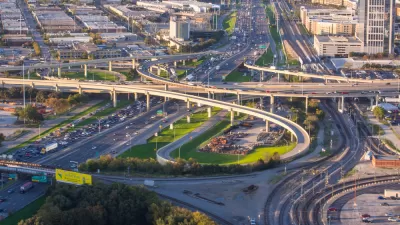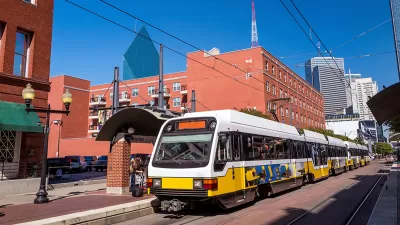Some planners and government officials in Dallas are concerned about the suburban boom occurring in counties north of Dallas. The reasons why are reminiscent of the Rust Belt in the 1960s.

"The continuing population boom in Dallas’ northern suburbs isn’t necessarily a good thing for the entire region, especially the urban core," according to a post by Brandon Formby.
"Collin and Denton Counties continue to draw highly educated, middle-class newcomers from across the country. Meanwhile, Dallas continues to grapple with serving a poorer population. And the city must do so without the benefit of increased tax revenue that comes with exploding new developments and neighborhoods its northern neighbors enjoy."
According to Formby, the city recently launched two planning-related efforts to counter the trends toward the north and away from the urban core. One is called Neighborhood Plus, "an ambitious fledgling plan that calls for implementing a $10.25-an-hour minimum wage, empowering neighborhoods to identify their most pressing needs and partnering with nonprofits to help do what local government cannot." The second is an overhaul of a planning overhaul, designed "to make it bureaucratically easier to add high-density developments, green spaces, and pedestrian- and bike-friendly infrastructure, all of which are said to draw young professionals and middle-class residents."
The article includes more details about the implications of the boom in the northern suburbs for Dallas schools, as well as the possibility of a proposal to tear down I-345 between Deep Ellum and East Dallas to help created a new places for dense housing and middle class neighborhoods.
FULL STORY: Planners fear for Dallas’ urban core amid suburbs’ growth

Trump Administration Could Effectively End Housing Voucher Program
Federal officials are eyeing major cuts to the Section 8 program that helps millions of low-income households pay rent.

Planetizen Federal Action Tracker
A weekly monitor of how Trump’s orders and actions are impacting planners and planning in America.

Ken Jennings Launches Transit Web Series
The Jeopardy champ wants you to ride public transit.

Rebuilding Smarter: How LA County Is Guiding Fire-Ravaged Communities Toward Resilience
Los Angeles County is leading a coordinated effort to help fire-impacted communities rebuild with resilience by providing recovery resources, promoting fire-wise design, and aligning reconstruction with broader sustainability and climate goals.

When Borders Blur: Regional Collaboration in Action
As regional challenges outgrow city boundaries, “When Borders Blur” explores how cross-jurisdictional collaboration can drive smarter, more resilient urban planning, sharing real-world lessons from thriving partnerships across North America.

Philadelphia Is Expanding its Network of Roundabouts
Roundabouts are widely shown to decrease traffic speed, reduce congestion, and improve efficiency.
Urban Design for Planners 1: Software Tools
This six-course series explores essential urban design concepts using open source software and equips planners with the tools they need to participate fully in the urban design process.
Planning for Universal Design
Learn the tools for implementing Universal Design in planning regulations.
Ada County Highway District
Clanton & Associates, Inc.
Jessamine County Fiscal Court
Institute for Housing and Urban Development Studies (IHS)
City of Grandview
Harvard GSD Executive Education
Toledo-Lucas County Plan Commissions
Salt Lake City
NYU Wagner Graduate School of Public Service





























